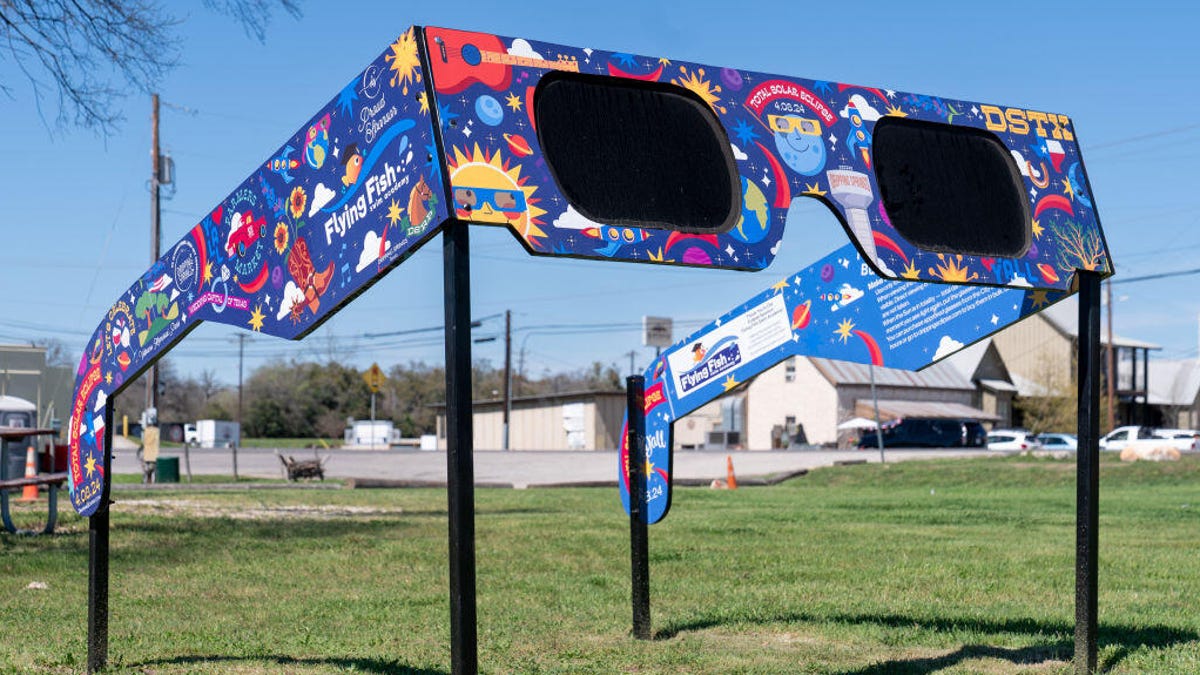With the total solar eclipse just over a week away, time is running out on finding both eye protection and camera lens protection. But there’s a device-app combo that could solve that problem in one fell swoop.
Solar Snap is designed to help you both protect your eyes when viewing a solar eclipse, as well as take photos of the eclipse while it’s happening. The bundle comes with a Solar Snap camera filter that attaches to the back of an iPhone or Android phone, along with solar eclipse glasses for protecting your eyesight during the event.
After you attach the filter to your phone, you can use the free Solar Snap Eclipse app to zoom in on the eclipse, adjust exposure and other camera settings, and ultimately capture photos of an eclipse.
Solar Snap was founded by Douglas Duncan, a former Hubble Space Telescope astronomer, who wanted to take better pictures of a solar eclipse using only a phone’s camera. However, when Duncan, who currently serves as an emeritus faculty member at the University of Colorado and was the former director of the university’s Fiske Planetarium, sought a solution, he couldn’t find one.
“At recent eclipses, I saw lots of people trying to take souvenir photos with their phones, but failing,” Duncan told me. “Something needed to be done! I spent the pandemic inventing and testing Solar Snap.”
Here’s what you need to know about the app about it, as well as some general tips for photographing the eclipse.
This is one of Duncan’s composite images from the 2017 solar eclipse.
Solar Snap app
Since Solar Snap has a very specific purpose, it isn’t necessarily useful day to day. However, it should be especially useful on April 8, when the moon passes between Earth and the sun and causes a total solar eclipse over North America. The Great American Eclipse, as it’s become known, will reach the Mexican Pacific coast at 2:07 p.m. ET on April 8 and then traverse from Texas to Maine until it moves off the Eastern coast of North America at 3:35 p.m. ET.
As exciting (and rare — the next total solar eclipse over North America won’t occur until 2044) as that may be, solar eclipses carry their fair share of risks. During the eclipse, and especially just before and after totality, or when the moon completely shrouds the sun, looking at the eclipse without protective eye gear can cause severe eye damage. You can similarly suffer significant eye damage if you look at the eclipse through binoculars, telescopes or, yes, the lens on a camera or smartphone without a filter.
Solar Snap aims at solving that problem by providing filters for both the camera and eyes, making it possible to look at the eclipse and take photos of it without worrying about eye safety. And with its app settings designed to optimize image quality, it promises to deliver nice-looking views of the eclipse for you to enjoy long after it’s over.
“I built automation into Solar Snap,” Duncan said. “If you put your phone on a tripod, at the start of totality, you can take the filter off (don’t bump the phone!), push the ‘totality’ button, and it will take photos all during totality, while you watch the eclipse.”
The $19 Solar Snap kit is available now. The kit comes with two pairs each of the phone filter and protective eyewear, along with two Velcro sets for attaching the filter to a phone. Solar Snap’s app is available in both Apple’s App Store and in Android app marketplaces like Google Play.
General eclipse-photography tips
Space.com reports that over 44 million people will experience totality during the April 8 eclipse, and it’s likely that most of them will try to capture a photo or two. Here are a few tips.
- Whether you’re digging out the fancy camera gear or keeping it simple, practice your setup before eclipse day. If anything goes wrong, or you forget an accessory you needed, you don’t want to learn that once the eclipse has already begun. Depending where you’re watching from, it’s only 3 to 5 minutes long. NASA suggests practicing by photographing the moon.
- You likely want to get yourself a certified solar filter to attach to your camera. It’ll protect your eyes and let you take photos while viewing the eclipse through your lens.
- The best photos will be taken with DSLR cameras, or what we old-timers used to just call “cameras.” But let’s be real: Many of us are just going to do the best we can with our phone cameras. NASA suggests you don’t count on your phone’s autofocus — you’ll have to do it manually, by tapping the screen, holding your finger on the moon to lock the focus, and then dragging your finger up and down to adjust the exposure.
- You also may want to buy an inexpensive zoom lens that clips on directly to your smart phone camera. “Digital zoom will not work to create a magnified, clear image,” NASA warns.
- Remember, however, that you don’t want to get too busy taking eclipse photos that you forget to enjoy the experience itself. After all, there won’t be another chance until 2044.
CNET’s Gael Cooper contributed to this article.

